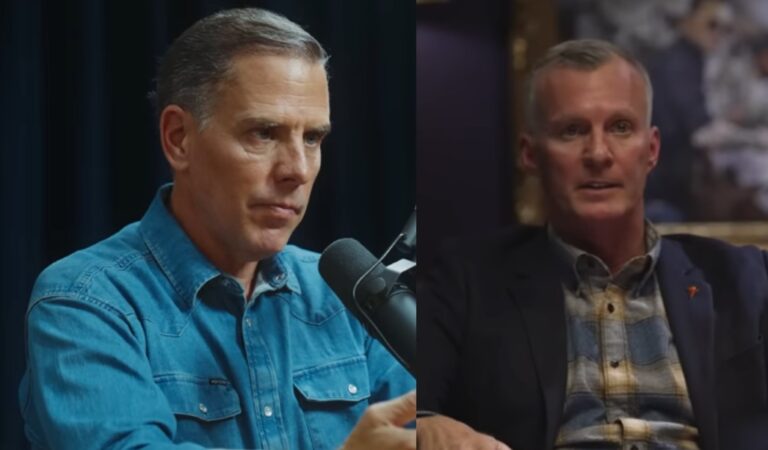By Michael Tavoliero
Have Alaskans finally learned the hard truth? Do Alaskans understand that it no longer matters who becomes governor if Juneau’s permanent coalition of legislators, special interests, bureaucrats, and their media echo chamber, still holds the real power?
Under Ranked Choice Voting and a fractured conservative field, we are on track to repeat the same cycle; multiple Republican candidates burning millions to split the vote, only to produce another executive who enters office already gelded or in other cases, spayed, by an unaccountable legislature and its minions. Alaska cannot afford another symbolic governor paired with a legislature that refuses to govern.
If these candidates truly care about Alaska’s future, if they are more than the recycled sound bites the public no longer hears, and more than polished resumes seeking their turn at the mic, then they must finally face the truth we, Alaskans, have been forced to swallow. The real threat to this state is not the other candidates on the debate stage. It is the legislative machine that has failed us, drained us, and dismantled our sovereignty. And unless these would-be governors have the courage to confront that machine, openly and ruthlessly, then they are all campaigning for a job that will leave them impotent on day one; stripped of power, boxed in by the same permanent coalition, and forced to preside helplessly over Alaska’s continued decline.
No speech, no slogan, no last-minute ad-buy can hide this anymore. Alaska is not dying because we lack charismatic governors. Alaska is dying because the legislature has become immune to the voters and insulated from consequences. If these candidates cannot acknowledge that, and act together to change it, then they are not fighting for Alaska. They are auditioning for ceremonial roles in its slow and inevitable collapse into Alaskan Marxism.
From Walker’s unilateral Medicaid expansion in 2015, to the institutionalization and breach of trust of PFD in 2018, to the legislature’s silence on education collapse, federal overreach, energy strangulation, and election-law degradation, the pattern is unmistakable. This past decade was not an accident. It was a slow, deliberate corrosion of sovereignty, competence, and public trust. These failures were not inevitable; they were planned. And unless the political structure, strategy and plan change, they will be repeated.
The Alaska Legislature’s post-Trump trajectory appears to rest on a single, dangerous move: consolidating power. Alaska is on the verge of formally embracing a fully centralized government, and the signs are no longer subtle.
The only viable path forward is unity. And while Alaska’s hardened political class insists that “tradition” must be preserved, dismissing any alternative as naïve or out of bounds, I ask them one simple question: under your way of doing things, has anything improved, or has everything gotten worse?
Instead of multiple gubernatorial campaigns competing to become the next powerless figurehead, Republican and conservative candidates must agree on a shared platform.
Look at our operating budget: according to Truth in Accounting, Alaska balanced its books only because it received $5.1 billion in federal money, making federal aid the single largest source of revenue, accounting for 52% of all operating funds. And, as if dependence were not alarming enough, the Legislature then pulled an additional $4.8 billion from the Earnings Reserve Account to manufacture a small surplus.
What if all candidates agreed to support the following four-part platform:
1. Fix Medicaid Before It Consumes the Budget
Medicaid expansion is driving Alaska into a fiscal trap by ballooning long-term liabilities and deepening dependency. Without real reform, it will keep devouring unrestricted revenue and leave the state financially paralyzed.
2. Demand Results from a Failing K–12 System
Despite record spending, Alaska ranks near the bottom in student outcomes. Our children are being shortchanged, our workforce weakened, and taxpayers forced to fund the most expensive, least effective education pipeline in the nation.
3. Unleash Alaska’s Energy Wealth
Alaska has world-class energy resources, yet high costs and shrinking production persist because government blocks development. Clear the obstacles, end the delays, and let Alaska power its own prosperity.
4. Protect the Permanent Fund Trust and the PFD
For decades the PF and PFD operated as a trust for the people. Diverting earnings to government was the first breach; merging the Fund with the ERA would destroy the trust entirely. Alaska’s resource wealth belongs to the people, not to the government.
What if they all committed to select and support a single nominee? One name goes on the ballot; the others form the war council.
All remaining campaign funds, all parties, and all conservative voters are then directed toward the real objective: building a durable conservative supermajority in both state legislative chambers. Without that supermajority, no governor, no matter how competent or sincere, will ever have the power to repair the damage of the last decade or protect Alaska’s future.
Alaska is approaching a political breaking point, not because of any single policy failure, but because of a deeper mindset that has taken root in the electorate: the belief that the State is inherently benevolent, indispensable, and responsible for solving every problem. When a population thinks this way, the State expands naturally, absorbs power effortlessly, and becomes immune to accountability. Its failures are tolerated, its intrusions normalized, and its growth mistaken for progress. That is the condition Alaska now faces.
This mindset explains why the legislature remains unmovable, why the bureaucracy grows unchecked, and why even major breaches of policy stability, Medicaid expansion, education collapse, cheap energy, PFD diversion, and federal dependency, were not reversed. Voters have been conditioned to view the State not as something to restrain, but as something to petition, praise, and depend upon. As long as this mentality prevails, no governor, however talented, can overcome the machinery that actually governs Alaska.
This is why the current field of multiple gubernatorial candidates is so dangerous. Each believes he or she alone can fix a system that is fundamentally protected by the public’s own thinking. The blind selfishness of this mentality only affirms the fact of the past: history will repeat itself. By running separately, they reinforce the illusion that the governorship is the lever of power, when in reality the true power lies in a legislature and bureaucracy that voters have ceased to question. Fragmentation all but guarantees another gelded/spayed executive. An Alaskan governor entering office in 2026 will already be overpowered by an entrenched political structure that no longer fears the voters who created it.
Unless the candidates unite, speak from a shared platform, and begin shifting the public mindset away from dependence on the State and back toward citizen sovereignty, Alaska’s political condition will not change. The problem is not merely who gets elected; it is how Alaskans have been taught to think about government itself. Until that changes, the State will continue to grow at the expense of the people, and every governor will inherit the same fate: a title without power, and a mandate without the means to fulfill it.








